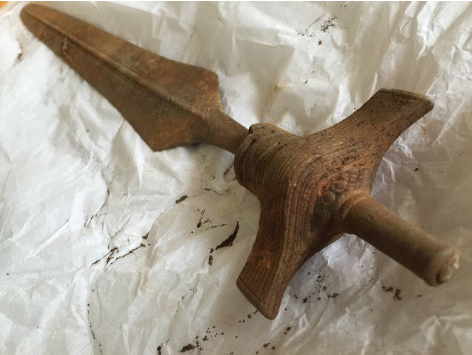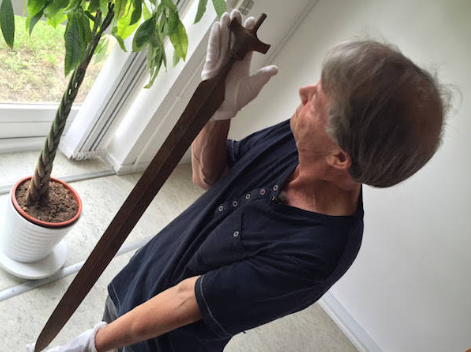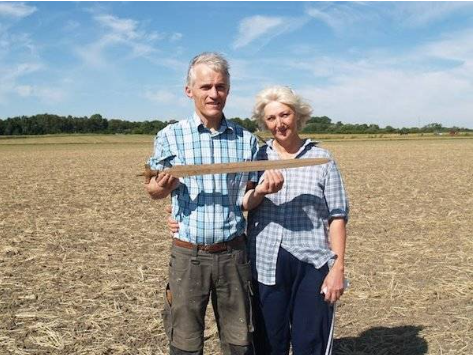Ernst Christiansen and Lis Therkelsen, being amateur archaeologists, started digging once the equipment signaled them that there was something underground.
They noticed what appeared to be a spear tip around 30 centimeters below the surface. After Christiansen and Therkelsen got in touch with Museum Vestsjaelland, a consortium of eleven regional museums that oversee the preservation and excavation of ancient sites in the vicinity, they learned that the find was a sword dating back three millennia from the Nordic Bronze Age.
It also demonstrated the high level of craftsmanship of the Scandinavian people of the period.

The sword’s exquisite details are easily visible due to its exceptional preservation. In a press announcement, the museum stated, “And it is even sharper.
When he accompanied Christiansen and Therkelsen the day after the sword’s discovery, museum inspector Arne Hedegaard Andersen confirmed just how well-kept the sword was.

Nestled between the pre-Roman Iron Age and the Nordic Stone Age, the Nordic Bronze Age spanned approximately 1700–500 BC. During this time, common materials like flint and stone were supplanted by imported bronze from Central Europe.
The remarkably pristine bronze sword hasn’t been handled since the Bronze Age, making it approximately a millennium older than the Vikings. The museum believes that it belongs to phase IV of the Bronze Age, which is between 1100 and 900 BC, and that it is around 32 inches long and remains fairly sharp.
Even though the sword’s grip was fashioned of long-rotted leather, the pommel and hilt display fine bronze work that was obviously created by competent artisans.
According to the details, it was probably an expensive piece of equipment utilized more for status symbolizing than for actual combat. Furthermore, clubs, spears, or axes were frequently used by warriors throughout this time for battle.
Despite entering the Bronze Age through trade comparatively later than other European countries, the craftsmanship produced locally was of a better caliber. Thus, despite the fact that little is known about the people’s religion, ethnicity, or linguistic traits at this time, they left behind a rich archaeological heritage.

Petroglyphs are rock carvings that show representations of everyday life, historical events, and superstitious beliefs from Scandinavia during the Bronze Age. These carvings are one of the main sources of information about life in the region during that period.
Denmark has recently seen a number of fascinating archeological finds.
A group of three archaeologists known as Team Rainbow Power discovered the largest-ever discovery of Viking gold in June 2016.
The discovery of a 5,000-year-old stone map in October 2016 provided insights about prehistoric topography and farming. Additionally, 2,000 enigmatic-looking gold spirals from the Bronze Age were found on Zealand in 2015.
